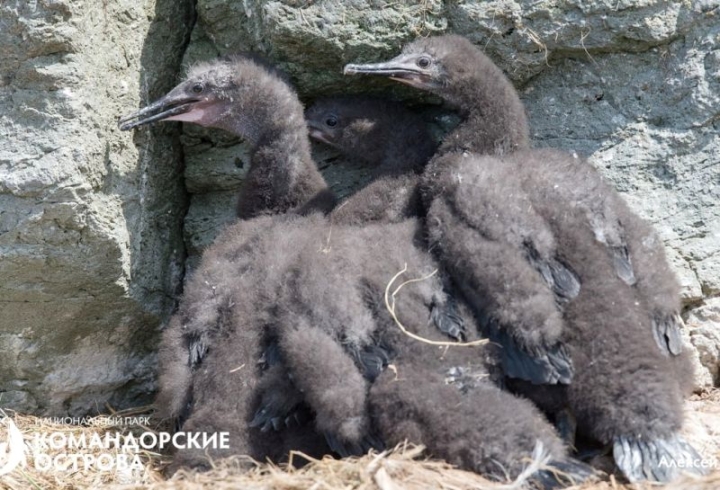In the Commanders, the parents of red-faced cormorants protect their chicks from gray gulls

A period of “demographic explosion” among cormorants has begun in the Commanders, Kamchatka.Today reports with reference to the Commander Islands National Park.
The appearance of the first chicks of both Bering and red-faced cormorants in the archipelago was recorded by the staff of the national park at the end of June, and in early July, mass hatching of offspring began in these birds.
“Most of the chicks will take to their wings only in late August or early September. Now they rely entirely on the protection and feeding of their parents, and their appetite is not at all childish. At the same time, some of them are so small that they cannot always be seen under mom’s and dad’s wings,” the national park said.
The biggest danger for baby cormorants right now is gray-winged gulls, ready to attack them right in the nest. Therefore, parent cormorants fly to the sea for food alternately, almost never leaving their chicks unattended.
Both representatives of the cormorant family are medium–sized birds, but the red-faced ones have a more massive beak. They nest in many places along the coasts of the Pacific Ocean. The usual birds for the Commander. But the habitat of the red-faced is gradually decreasing.
The Bering cormorant feeds on fish, which it flies far into the open sea (hence its Latin name – pelagic cormorant). The red-faced kinsman also leans on sea gifts. The chicks are fed by their parents at first with semi-digested food, then with whole small fish and crustaceans.
Photo: Alexey Perelygin, Mikhail Vakurov/Commander Islands National Park.